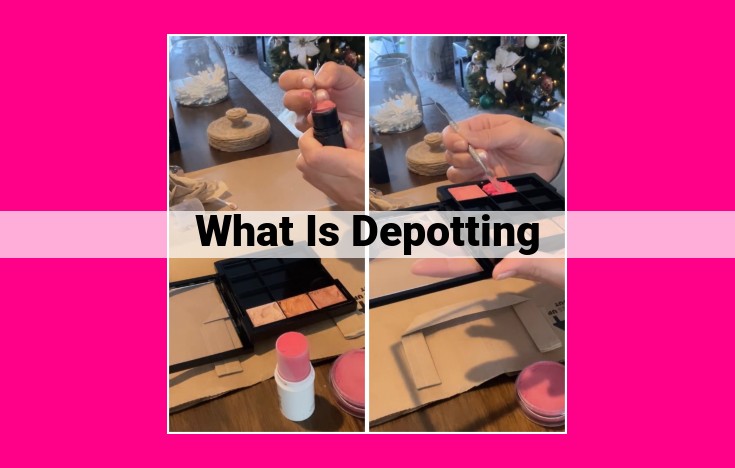Tiny White Bugs On Plants: Identify Aphids, Whiteflies, Or Mealybugs For Effective Control

The tiny white bugs on your plants could be aphids, whiteflies, or mealybugs. Aphids are small, soft-bodied insects that feed on plant sap, while whiteflies are small, white insects that produce a sticky substance. Mealybugs are cottony-looking insects that also feed on plant juices. These pests can cause damage to your plants, so it’s important to identify them and take steps to control them.
The Vital Importance of Plant Health: Understanding the Challenges of Pests
The lush greenery and vibrant blooms that adorn our homes and landscapes are a testament to the beauty and vitality nature has to offer. However, beneath this picturesque exterior, a constant battle wages against unseen foes that threaten the well-being of our beloved plants: pests. These tiny creatures can wreak havoc on our cherished greenery, leaving us frustrated and desperate for solutions. Understanding the significance of preserving plant health is the first step in safeguarding our botanical companions from these formidable adversaries.
Maintaining the health of our plants is paramount for several reasons. Healthy plants not only enhance the aesthetic appeal of our surroundings but also play crucial roles in purifying the air, providing food, and fostering biodiversity. They act as natural air filters, removing harmful pollutants from our homes and offices. Furthermore, they serve as a vital source of sustenance for pollinators, such as bees and butterflies, which are essential for maintaining a balanced ecosystem. By safeguarding the well-being of our plants, we not only protect their beauty but also contribute to a healthier and more vibrant environment.
However, the presence of pests poses a constant threat to the health of our plants. These invasive organisms feed on plant tissues, suck sap, and transmit diseases, undermining their vitality and compromising their growth. Aphids, mealybugs, and spider mites are just a few examples of the myriad pests that can infest our plants, each bringing its own unique set of problems. These pests can cause stunted growth, yellowing leaves, and a decline in overall plant vigor, ultimately leading to reduced yields and decreased aesthetic appeal.
Common Plant Pests and Their Impact on Plant Health
Insects
Insects are a major challenge to plant health, causing significant damage to leaves, stems, and flowers. Aphids, with their soft bodies, suck plant sap, leading to yellowing and wilting. Whiteflies, on the other hand, secrete a sticky substance called honeydew, which can block sunlight and attract mold. Mealybugs appear cottony and feed on plant juices, causing stunting and leaf distortion.
Scale insects, tiny and immobile, form hard shells and feed on plant sap. Thrips are slender insects that pierce plant tissues, resulting in silvery or brown streaks. Lastly, springtails, despite their small size, can damage young seedlings.
Mites
Mites, although tiny, can also have severe impacts on plant health. Spider mites, often red or green, spin webs on plants and feed on their sap. Broad mites cause bronze or silver spots on leaves, while cyclamen mites attack corms and cause stunting and leaf deformities. Finally, rust mites leave behind rust-colored spots on leaves.
Protecting Your Plants from Pests
To maintain plant health, it’s crucial to implement effective pest management strategies. Regular plant inspections allow for early detection and identification of pests. Cleanliness is key, as debris can harbor pests. Pest control barriers, such as sticky traps or row covers, can prevent pests from accessing plants.
If pests do appear, accurate identification is essential for selecting appropriate control methods. Chemical sprays, biological controls, or physical removal can be utilized effectively. Close monitoring is crucial, as pest management strategies may need to be adjusted based on the severity of the infestation.
Environmental Factors Influencing Plant Health
Maintaining the vitality and well-being of our cherished plants requires understanding the profound influence of their surrounding environment. Beyond pests and diseases, factors such as light, water, temperature, humidity, and fertilization play pivotal roles in fostering optimal plant health.
The Power of Light
Light serves as the lifeblood of plants. It fuels photosynthesis, the magical process that transforms sunlight into sustenance for plant growth. Striking a balance is crucial: insufficient sunlight leads to stunted growth and pale foliage, while excessive exposure can scorch leaves and hinder overall development.
Water: Friend or Foe?
Water is indispensable for plant life, but both overwatering and under watering can have detrimental consequences. Excess moisture saturates the soil, suffocating roots and rendering them susceptible to rot. On the other hand, drought stress dries out plants rapidly, causing leaves to wilt and growth to slow.
Temperature: Finding the Sweet Spot
Temperature variations directly impact plant growth and development. Extreme heat or cold can stress plants, impairing their ability to absorb nutrients and produce food. Understanding the ideal temperature range for your specific plant species is essential for maintaining their vigor.
The Significance of Humidity
Humidity plays a vital role in regulating plant transpiration, the process by which plants release water vapor into the atmosphere. A humid environment reduces water loss, minimizing the risk of dehydration. Conversely, dry air promotes transpiration, potentially leading to water stress and stunted growth.
Fertilization: A Nutritional Boost
Fertilization provides essential nutrients for healthy plant growth. A balanced fertilizer contains nitrogen, phosphorus, and potassium (NPK), each playing a specific role in various plant processes. Over or under fertilization can disrupt growth, cause nutrient deficiencies, or even lead to plant damage.
By understanding and optimizing these environmental factors, we empower our plants to thrive. With the right balance of light, water, temperature, humidity, and fertilization, we cultivate a nurturing environment that supports their vitality and beauty.
**Preventing and Managing Plant Health Issues: A Comprehensive Guide**
Maintaining the health of your plants is crucial for their growth, productivity, and aesthetic appeal. However, pests and diseases pose significant threats, jeopardizing the well-being of your greenery. Understanding how to prevent and manage these issues is essential for safeguarding your botanical treasures.
**Prevention: The Proactive Approach**
Prevention is always better than cure, and this rings true for plant health as well. Regular inspections of your plants are paramount. Closely examine leaves, stems, and undersides for signs of pests or diseases. This vigilant approach allows for early detection, giving you a headstart in combating any potential threats.
Maintaining a clean and debris-free environment around your plants is another preventive measure. Diseased leaves, fallen fruits, and weeds provide a haven for pests and pathogens. By diligently removing and disposing of such materials, you reduce the risk of infestations and infections.
Employing pest control barriers is a proactive strategy to deter uninvited guests. Sticky traps ensnare crawling insects, while row covers create a physical barrier against pests. These simple yet effective measures create a less hospitable environment for potential invaders.
**Management: Taking Action**
Despite preventive efforts, infestations or diseases can still occur. Prompt and accurate identification is crucial for effective management. Consulting with a plant expert, using identification guides, or relying on online resources can help you accurately diagnose the problem.
Once identified, choose appropriate control methods. Chemical sprays may be necessary in severe cases, but consider biological controls such as beneficial insects and predators. These natural allies feed on pests, restoring balance to your ecosystem. Physical removal by hand or using traps is also a viable option for smaller infestations.
Monitoring plants closely after implementing control measures is essential. This enables you to assess the effectiveness of the treatment and make adjustments as needed. If the problem persists, re-identify the pest or disease and consider alternative control strategies.





